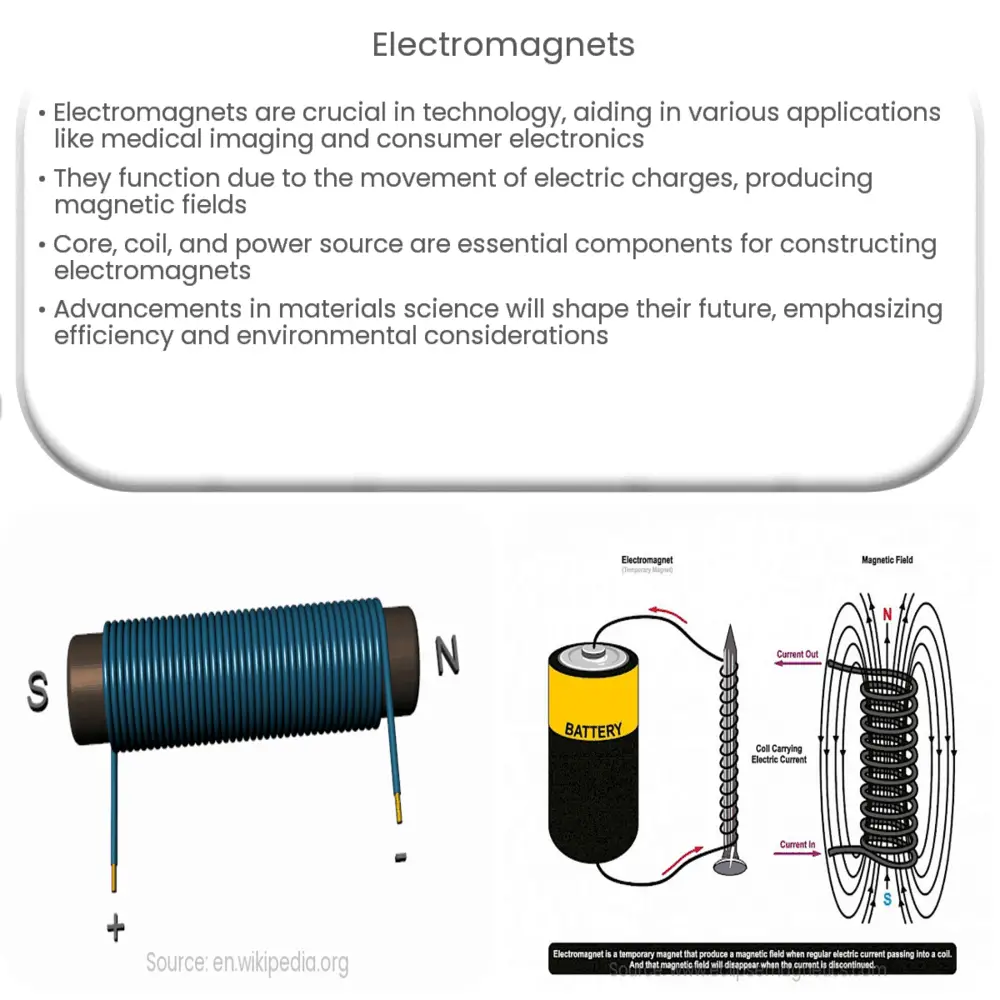Explore the fascinating world of electromagnets, their construction, operation, applications, environmental impact, and future prospects.

Introduction to Electromagnets
Electromagnets, a fundamental element in the field of electromagnetism, offer a multitude of applications in modern technology. They play an indispensable role in numerous electronic devices, medical equipment, industrial applications, and scientific research.
The Concept of Electromagnetism
The phenomenon of electromagnetism is the combined force of electricity and magnetism. The basis of this intriguing concept lies in the movement of electric charges that give rise to magnetic fields. This magnetic field then interacts with other electrically charged particles, establishing the laws of electromagnetism.
Construction of Electromagnets
-
Core: The core of an electromagnet is usually composed of a ferromagnetic material such as iron, nickel, or cobalt. The core’s purpose is to enhance the magnetic field produced within the coil.
-
Coil: The coil, often referred to as the ‘windings’, is a critical part of an electromagnet. The coil is essentially a wire wound around the core, with the electric current passing through it to generate the magnetic field.
-
Power Source: The power source provides the electric current to the coil. The amount of electric current and the number of turns in the coil directly determine the strength of the electromagnet.
Principle of Operation
The operating principle of an electromagnet hinges on the law of electromagnetic induction, first discovered by physicist Michael Faraday in 1831. As current flows through the coil, it creates a magnetic field around the core. This magnetic field can be manipulated by controlling the electric current – increasing the current or the number of turns in the coil amplifies the magnetic field, while decreasing them has the opposite effect. Remarkably, the magnetic field disappears entirely when the electric current is turned off, which is one of the defining characteristics of an electromagnet, making it versatile for many applications.
Types of Electromagnets
There are primarily three types of electromagnets: solenoids, toroids, and pot core magnets. Solenoids have a cylindrical shape with a uniform magnetic field inside the coil. Toroids are similar to solenoids but are shaped like a doughnut, while pot core magnets are a combination of both, designed for specific applications requiring a localized magnetic field.
Applications of Electromagnets
Electromagnets find an impressive array of applications in diverse fields:
-
Consumer Electronics: Devices such as televisions, computers, and speakers use electromagnets for functions ranging from data storage and signal processing to sound generation.
-
Industrial Use: Electromagnets are used in heavy industries for lifting and moving magnetic materials. They are also employed in magnetic separation processes to remove magnetic impurities.
-
Medical Field: Electromagnetic technology is a key component in medical imaging devices like MRI machines, providing non-invasive insight into the human body.
-
Scientific Research: Particle accelerators and other advanced scientific equipment often employ powerful electromagnets for precise manipulation of charged particles.
Electromagnets and the Environment
While electromagnets are an integral part of modern life, they also raise environmental considerations. The energy they consume contributes to global electricity demand, which is often met through non-renewable sources. Therefore, research into energy-efficient electromagnet design is of great importance.
Future of Electromagnets
The future of electromagnets is closely tied with advancements in materials science. Researchers are continuously exploring novel materials that can exhibit superior magnetic properties and more efficient performance. A notable example is the development of superconducting materials, which can carry electric current without resistance, leading to extremely powerful electromagnets with minimal energy loss.
Conclusion
In conclusion, electromagnets, with their unique attributes and adaptability, serve as a cornerstone in the world of technology. From the simplest electronic device to the most advanced scientific research equipment, the influence of electromagnets is ubiquitous. However, alongside their widespread use, a balanced view that also takes into account environmental impacts is necessary. As we forge ahead in the realm of technology, the development of more efficient, environmentally friendly electromagnets will remain a key focus, ensuring that this fascinating piece of technology continues to shape our future in a sustainable manner.


